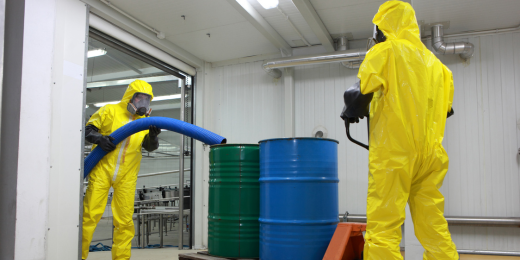The Reclaim Waste Ideas
The Reclaim Waste Ideas
Blog Article
8 Easy Facts About Reclaim Waste Explained
Table of ContentsReclaim Waste Things To Know Before You BuyReclaim Waste Things To Know Before You Get ThisRumored Buzz on Reclaim WasteThe Buzz on Reclaim WasteThe Greatest Guide To Reclaim Waste
Residential sewage waste refers to the waste and products from a domestic septic storage tank. The correct monitoring and disposal of residential sewage waste require liquid waste to be moved to a sewage therapy plant where the appropriate methods and tools are applied to detoxify and dispose of waste.
Commercial waste usually consists of potential dangers, such as flammable products or a blend of fluid and strong waste products, and calls for an advanced and thorough disposal procedure. The disposal of industrial waste normally includes the filtering of waste prior to transportation to guarantee safe and proper disposal. Hazardous waste is created from byproducts and drainage of industrial procedures and manufacturing.
This sort of waste can not make use of the very same sewage administration transportation or processes as septic or commercial liquids. The hazardous waste monitoring process requires the assessment and screening of fluid waste prior to it undergoes the disposal procedure (liquid waste disposal). Drainage waste is the fluid waste that originates from overflow and excess stormwater in highly booming areas or cities
Runoff waste can cause contamination and flooding if not dealt with correctly. Making certain proper waste monitoring can protect against calamities and decrease ecological harm.
An Unbiased View of Reclaim Waste
Contact PROS Solutions today to find out about our waste management and disposal solutions and the appropriate methods to take care of the fluid waste you generate.
(http://www.askmap.net/location/7161699/australia/reclaim-waste)This so-called 'wastewater' is not just an essential source but, after therapy, will certainly be released to our land, rivers or the sea. Utilized water from bathrooms, showers, bathrooms, kitchen sinks, washings and commercial processes is known as wastewater.

water made use of to cool machinery or clean plant and devices). Stormwater, a kind of wastewater, is overflow that flows from farming and urban locations such as roofing systems, parks, yards, roads, paths and seamless gutters into stormwater drains, after rainfall. Stormwater streams without treatment directly to neighborhood creeks or rivers, ultimately getting to the ocean.
The Best Guide To Reclaim Waste
In Queensland, a lot of wastewater is dealt with at sewer therapy plants. Wastewater is transferred from domestic or industrial sites with a system of sewage systems and pump terminals, referred to as sewerage reticulation, to a sewage treatment plant. City governments build, preserve and run most sewer therapy plants. Operators are accredited under the Environmental Defense Act 1994 to discharge cured wastewater at an appropriate environmental requirement right into waterways.
The Department of Natural Resources suggests city governments concerning managing, operating and keeping sewerage systems and treatment plants. In unsewered locations, city governments may call for householders to set up private or home sewer therapy systems to treat domestic wastewater from bathrooms, cooking areas, restrooms and washings. The Division of Natural Resources authorizes making content use of home systems when they are confirmed to be efficient.
In some brand-new communities, treatment of some stormwater to remove litter, sand and gravel has actually begun using gross contaminant catches. Wastewater treatment occurs in four stages: Gets rid of strong matter.
Wastewater then streams into huge tanks where solids clear up and are gotten rid of as sludge. Oil and scum are skimmed from the surface. Uses little living microorganisms knows as micro-organisms to break down and eliminate remaining dissolved wastes and fine particles. Micro-organisms and wastes are included in the sludge. Gets rid of nitrogen and phosphorus nutrients that might trigger algal blossoms in our rivers and intimidate aquatic life.
The Reclaim Waste Statements
Nutrient removal is not readily available at all sewer therapy plants due to the fact that it calls for pricey specialized equipment. It is coming to be much more common in Queensland. Clear fluid effluent generated after therapy might still have disease-causing micro-organisms. If this effluent is released right into waterways such as rivers or the sea, the micro-organisms will ultimately die out.

The majority of wastewater streams into the sewage system. Under the Act, neighborhood federal governments administer authorizations and permits for ecologically appropriate tasks (ERAs) including wastewater releases that might have a local impact.
The Best Strategy To Use For Reclaim Waste
Monitoring gives valid details regarding water high quality and can verify that licence problems are being satisfied. The information obtained through monitoring provides the basis for making water top quality decisions.
Report this page